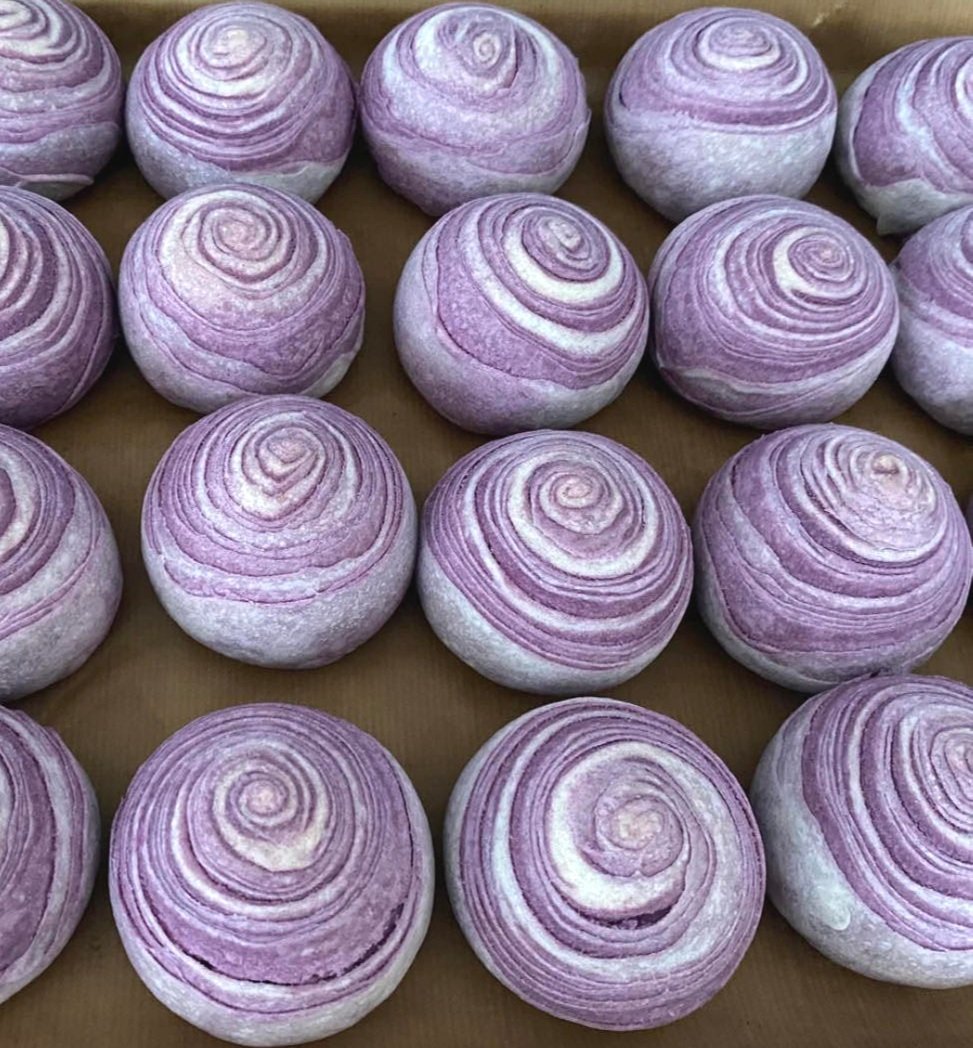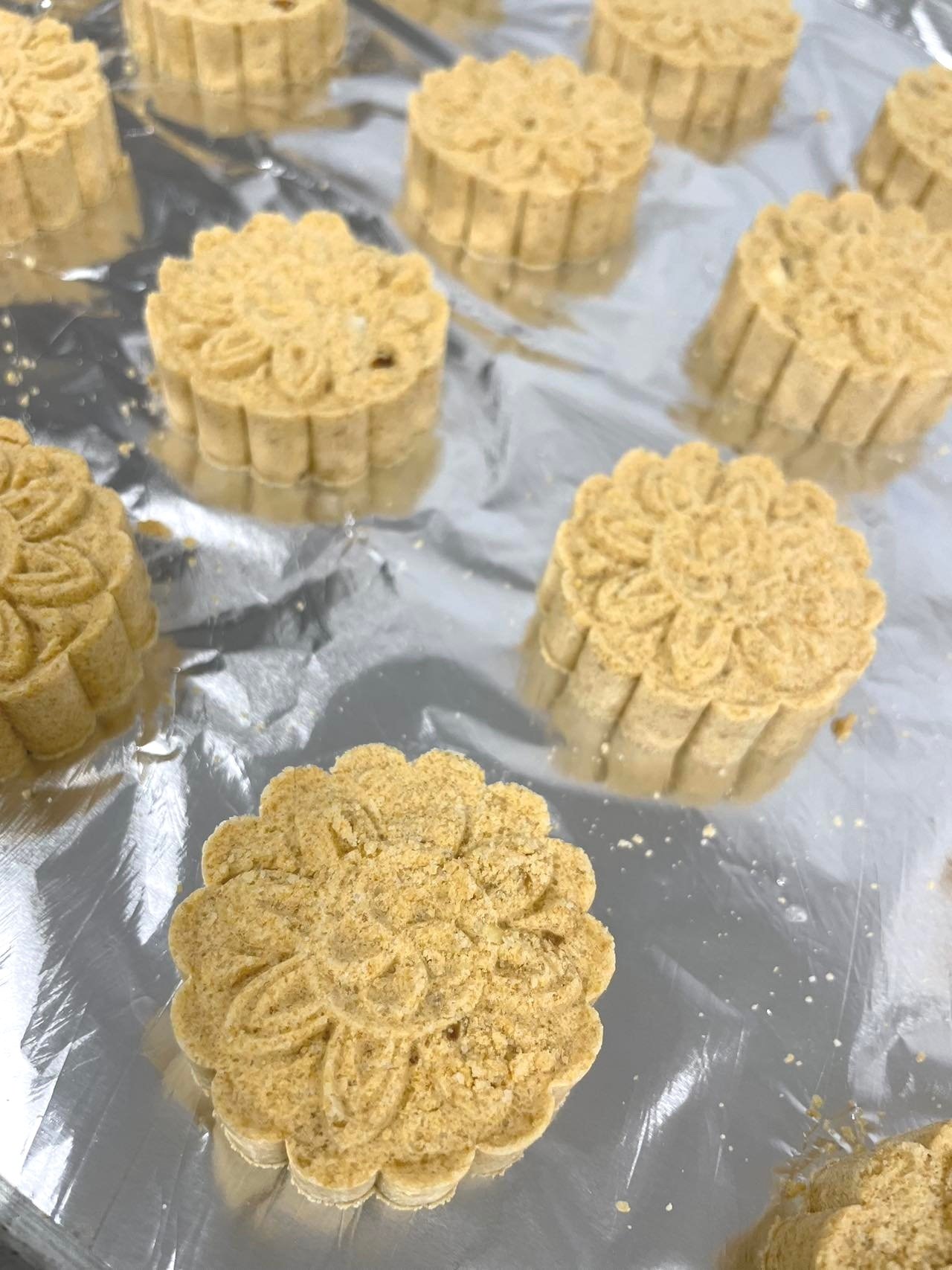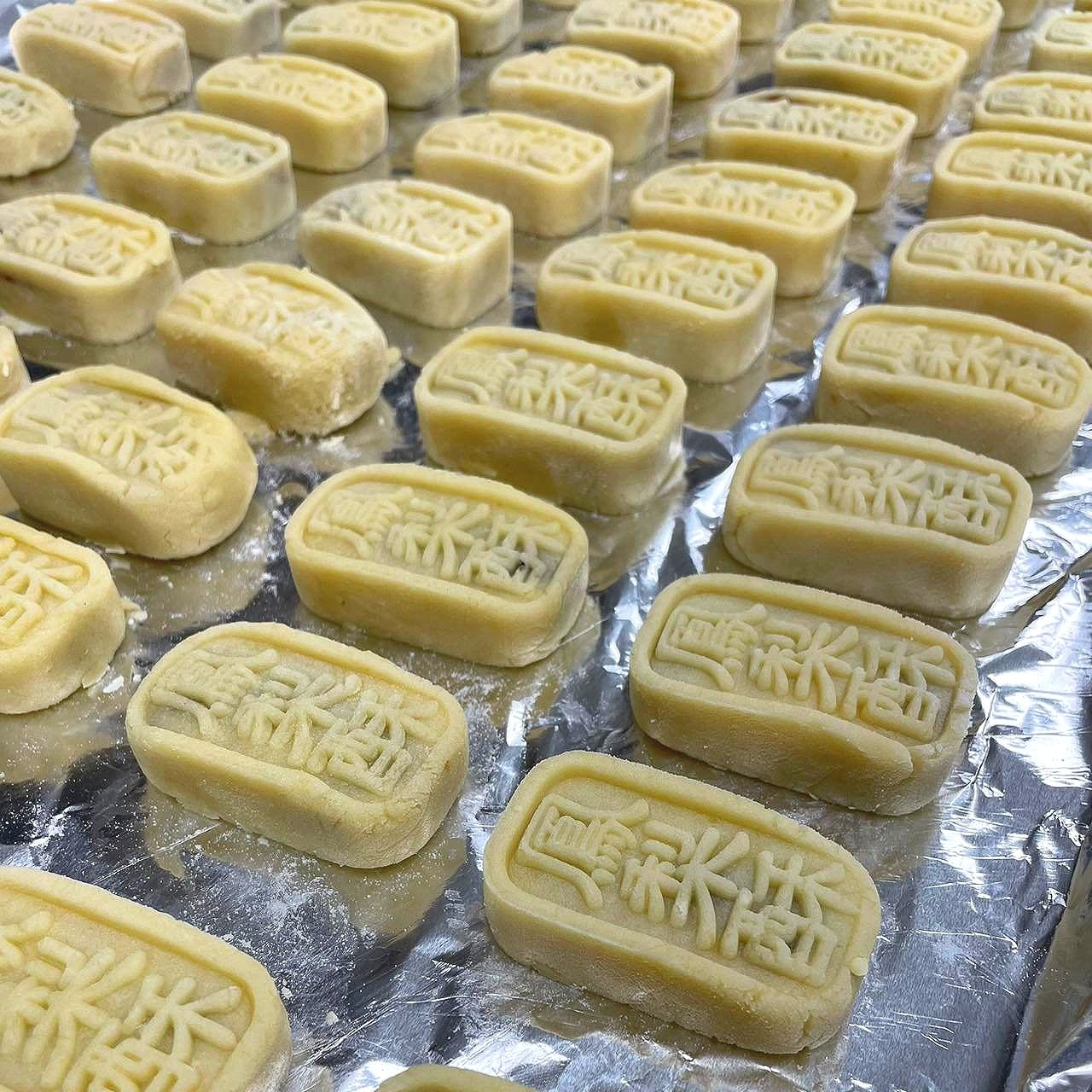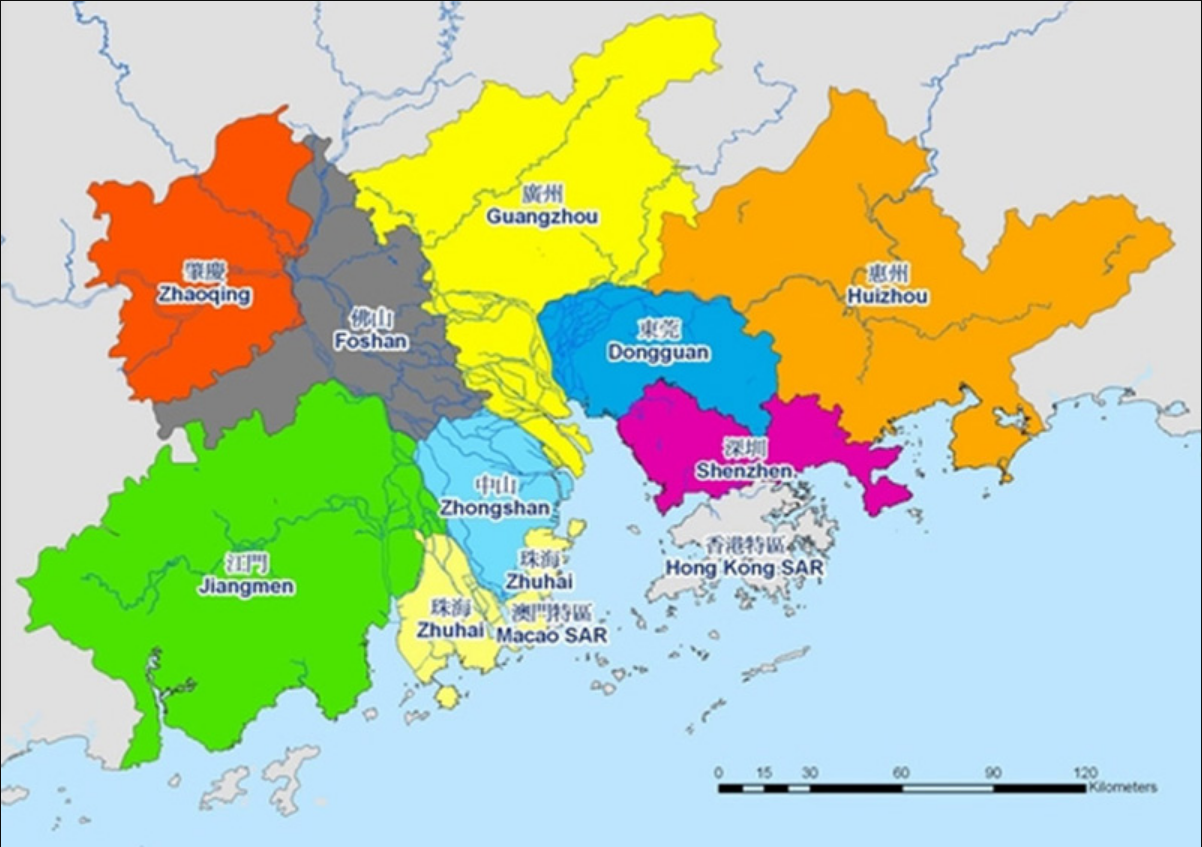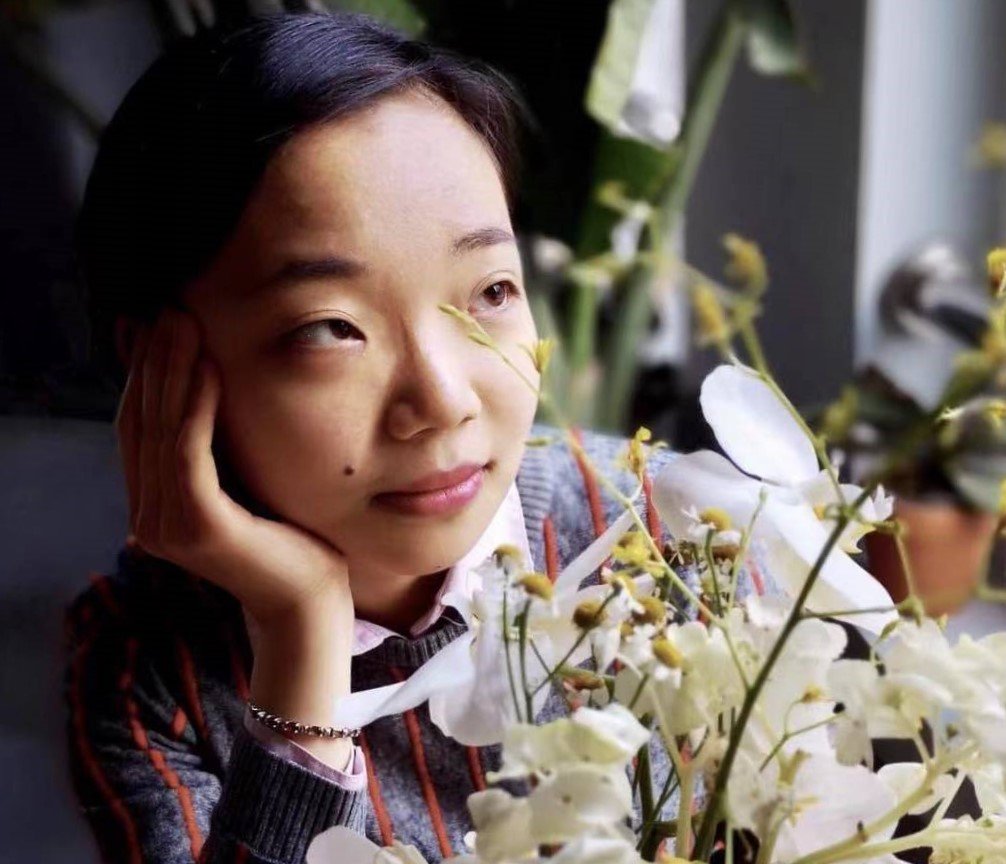THE PEARL RIVER DELTA PASTRY COLLECTION
Have you participated in our November 2022 Dim Sum Series Cooking Workshops? If you missed the workshops this time, don’t worry. More workshops will come up in the future! Moreover, to compensate for the missing, we are pleased to announce our traditional pastry collection from the Chinese Pearl River Delta region (珠江三角洲) for 2023 Chinese New Year: Guangdong taro pastry (芋泥酥), Hong Kong sweetheart cake (老婆餅) and Macau almond cake (杏仁餅). While the “Four Heavenly Kings” (crystal shrimp dumplings, dry steamed shumai, cha siu buns, and egg tarts) in the Dim Sum world are the classics of Cantonese teahouses, these pastries are the touchstones of Cantonese bakeries. Besides, Taiwanese pineapple cakes (鳳梨酥) are also available from NOW for the festive season!
About The Pearl River Delta Pastry Collection
While the development of teahouses is an index to the thriving trades and the bustling harbors in the late-nineteenth and early-twentieth-centuries Pearl River Delta, traditional local bakeries give us another lens through which to observe urban life. In Guangdong, Hong Kong, Macau and Taiwan, traditional bakeries are called “maison du pain” (餅家). Most of them are family-owned businesses and have little space for dining in. What is different from the western bakeries is that such “maison du pain” in southern China usually do not sell staple food; instead, they feed the residents with pleasing sweet and savory snacks and cakes in its vicinity. The repertoire of these “maison du pain,” again, epitomizes the metropolitan atmosphere of the Pearl River Delta with a strong local taste: from the typical Chinese mung bean or red bean pastries to curry puffs, which is obviously a localized English pasty. Rustic or elaborate, “maison du pain” is indeed an integral part of the individuals’ life: grabbing something there for breakfast or a casual “tea” (yum cha) at home; indulging in one on the way back from school; or, customizing a large, ceremonial traditional cake for special events or festivals. We will write about Chinese bakeries in more details in the future, but now, let’s try three traditional, well-known items.
Taro pastry (芋泥酥):
Chinese flaky pastry filled with taro purée. The pastry is mixed with taro purée as well. Popular variations include meat floss (肉鬆) and taro purée filling, salted egg yolk and taro purée filling, red bean paste and taro purée filling, etc. For a good taro pastry, the natural fragrance of taro should not be overwhelmed by other flavors, and the taro purée should have a spongy texture.
Sweetheart’s cake (老婆餅):
Chinese flaky pastry filled with sweetened glutinous rice, candied winter melon, topped with white sesame. There are several traditions about the origin of this cake. The most reliable version — in our opinion — says that a bakery owner was testing recipes at home and asked his wife if she liked them. Not convinced, the wife took out a box of freshly baked pastry she had made at home. The bakery owner was very much surprised after tasting it; when he brought the rest to his employees and friends, they all loved it and asked the name of the cake and where he got it. However, it is just a pastry with the simplest ingredients, so the owner answered, “It’s from my wife, and let’s call it my sweetheart’s cake.”
Macau Almond Cake (杏仁餅):
Don’t be misled by the name — this cake is completely made from mung bean four and does not contain apricot kernel flour at all; it earns the name for it tastes as aromatic as apricot kernels (apricot kernels are native to southern China; the more common translated name “almond cookie” is incorrect in fact). If you visit Macau, perhaps you can also find a piece of candied pork lard in the small cake, which is the oldest version. In the late Qing period, a poor literatus living in the county of Xiangshan (香山縣, covering today’s Zhongshan, Zhuhai and Macau) wanted to celebrate his mother’s birthday, but the family did not have enough money to host guests. This was solved by his maid Poon Ngaansoeng (潘雁湘) made abundant cookies with ground mung beans, for mung bean is an inexpensive ingredient in southern China. More than that, the guests were amazed by the extraordinary taste, praising “the left fragrance lingering among Teeth” (齒頰留香). Years later, Poon named her bakery after the praise, called “Choi Heong Yuen Bakery (咀香園餅家, lit. ‘chewing the fragrance’)”. Now, the mung bean-based “almond cake” is the most popular snack in Macau, and there are several centuries-old bakeries specializing in making it besides the Choi Heong Yuen Bakery.
Where is the Pearl River Delta region?
Yum Cha, Tea and the Monopolist Howqua
- The Cantonese Teahouse Culture -
The Cantonese term yum cha (飲茶, lit. “drinking tea”) means a meal involving Chinese tea and dim sum; in British English, interestingly, besides the drink, tea also refers to meal. The development of the “going for dim sum” (食點心) practice and the British teatime treats involves the increasingly essential role that tea played in the life of ordinary people in China and Britain, despite the fact that the elite facet of tea and tea consuming never ceased in both China and Britain — there is a rich history behind the linguistic parallels.
Commercial teahouses serving dim sum in Guangzhou (廣州, also “Canton" in English) evolved from “two cent house” (二釐館), which first appeared in the late 18th century. Earning its name from the low price for a pot of tea, such houses were quite humble as their target customers were the labourers working in the neighborhood of the Thirteen Factories (十三行) in Guangzhou, offering them a place to drink, eat and rest. (For a long time, Guangzhou had been the only Chinese port accessible to most foreign traders, and the Thirteen Factories was the principal and sole legal site of most Western trade with the Qing Empire in 1757–1842.) More of fueling up food than entertainment, the proto-dim sums served at these “two cent houses” were usually simple snacks and tended to be very filling. The best-known item is — also one of the few options on “two cent house” menu still popular today — “big steamed chicken bun” (雞球大包). The diameter of a “big, steamed chicken bun” is 5.5–6 inches; tearing the puffy bun reveals the extraordinary generous filling: roughly diced chicken, pork, shiitake mushrooms, bamboo shoots, etc. “Big steamed chicken bun” is economical for the poor and the labourers: the ingredients are cheap, to make the buns do not require much work, and one bun provides enough energy for half a day.
When the labourers popped in the “two cent houses” for a break, tea was both in their hand and by their feet: a good portion of the goods for export they were shouldering was loose-leaf tea. From the last couple of decades of the 18th century, Britain became the primary destination of the exported tea from Guangzhou: by 1793, the British East India Company had claimed an overwhelming 78.8% share of the total tea export from Guangzhou, and continued to lead the market in the early 19th century. Back home, correspondingly, when tea became more accessible to the urban population, “tea” was re-invented alongside “bread-and-butter” as a subsistence staple. The English writer Isabella Beeton (1836–1865) recalled in her most successful book (Mrs. Beeton’s Cookery Book and Household Guide, 1861) on home economics that in contrast to the tea accompanying thin bread and butter in her time, in the first half of the century tea was a companion for “tea-cakes, hot buttered toast, new laid eggs.” This light meal used to be consumed around at 5 pm to make the long afternoon bearable, for dinner was eaten at what is now called “lunchtime” or, in the early afternoon, a lighter supper at 8 pm. Therefore, it is not difficult to understand why “high tea” used to be substitutes for late dinners for families who could not afford three meals a day or those who were occupied during the day. According to Mrs. Beeton, high tea usually includes “cold fish and meats, mayonnaises, salads, fresh fruits, cream, etc.” in summer; “in winter, besides such cold dishes as game pie, joints, and sweets, such things as rissoles, salamis, and cutlets are usually give.” These high-fat, high-carb foods provide energy quickly, and the working class found them very satisfying with tea — very much the same as the all-in-one tea snacks for the poor and ordinary people in contemporary southern China. As the porters were clustering at “two cent houses”, ordering tea and “big steamed chicken buns”, the tin miners in Cornwall were gobbling their famous Cornish pasties with tea.
To a large extent, popularization and commercialization of tea consumption can be attributed to labour force aggregation associated with industrialization. Another aspect of the transformation of meals as a response to the changes in economic activities is that traditional food adopted the appearance as tea snacks or part of the “tea” as meal: steamed bun with filling appeared no later than the Three Kingdoms Period (220–280), but it did not gain much popularity in the Pearl River Delta (the port city of Canton and its hinterlands) until the 17–18th centuries, and the pasty — which has been a documented part of the British diet since the 13th century — was “rediscovered” by miners and farm workers in Cornwall during roughly the same period. The economically minded Cantonese tea vendors soon realized that serving “tea,” or yum cha, could be very profitable beyond serving the labourers, for people in southern China had a centuries-old tradition of having a light meal in the mid-afternoon (食晏飯). By upgrading the ambiance and improving the quality of tea and food, in the second half of the 19th century, teahouses (茶居、茶樓) had replaced private living rooms and pavilions as the main place for such entertainment and became an important public place for the urban population, especially the merchants and go-betweens, to socialize. It was out of these dynamics that the good old snacks, such as taro cakes (芋頭糕), radish cakes (蘿蔔糕), lotus leaf-wrapped glutinous rice chicken (荷葉糯米雞), found their place in the dim sum menu while being remoulded into “finger foods” in steamer baskets. They are still popular options today.
An extremely fascinating though less known story is about the origin of the crystal shrimp dumpling (蝦餃, or har gow). It was created in the private kitchen of Howqua (伍秉鑑, 1769–1843, 商名浩官). Howqua was the leading authorized merchant in the Thirteen Factories and perhaps the wealthiest man in Qing during the 19th century. For our story, it is worth pointing out that Houqua was the man who funneled the lion’s share of China’s tea to the rest of the world by the 1810s: from 1813 until the conclusion of the EIC monopoly, Howqua remained the most important partner for the Company. His connections to the Western traders who travelled to Guangzhou had bridged the two worlds and brought to the markets in Britain and beyond a critical commodity that fueled consumers’ daily lives in the West. Originally from Quanzhou (泉州), Howqua loved to treat himself with a plate of steamed dumplings in the mid-afternoon and a pot of tea, and his passion for fresh shrimp was also known. Thus, his clever private chef made steamed dumplings with shrimp fillings, and Howqua was very pleased, of course. But the skins of the proto-har gows were made of rice flour, for wheat does not grow in the south. After his work got approved, the chef developed wheat starch (澄麵) dough-based skins for a semi-transparent appearance. The decedents of the chef founded a teahouse in the suburbs of Guangzhou called “Yi Zhen” (怡珍) in the late 19th century, serving the unique shrimp dumpling created by their ancestor. Their crystal shrimp dumpling quickly made a name for the teahouse and was followed by the teahouses all across the city.
Initially sprouting in Guangzhou, the secret to the teahouses’ huge, lasting success lies in their ability to incorporate a variety of culinary traditions. Lots of popular dim sim are from the pan-Pearl River Delta, even beyond the province or from the West. For example, “beehive taro wedges” (蜂巢芋角, deep-fried taro puffs with pork and prawn filling), taro cakes, water chestnut cakes, fun quor (粉粿, a variety of steamed dumpling using rice flour) are from the old town of Teochew (潮州); song gao (鬆糕, sponge rice cake) can be traced back to Zhejiang Province; egg tart, one of the “Four Heavenly Kings” (the other three are crystal shrimp dumpling, dry steamed shumai and cha siu bun) of Cantonese teahouses, is adapted from the English egg custard tart brought by the British settlers and merchants: both types of tarts use shortcrust pastry for the tart shell, but the custard filling of the teahouse style has more fluidity. In fact, the incorporation of external cuisines was made possible only by the unique role of the Pearl River Delta: in the long 19th century, this region had been the only, then the main window (after 1842) where the broad world of China and the West converged.
Further Reading:
Wong, John. Global Positioning: Houqua and His China Trade Partners in the Nineteenth Century. Cambridge, MA: PhD dissertation, Harvard University, 2012.
Le Pichon, Alain. “Howqua and the Howqua: How A Chinese Monopolist Saved American Free-Traders from Financial Ruin,” in Journal of the Royal Asiatic Society Hong Kong Branch, vol. 50, 2010. pp. 99–121.
Blog prepared and edited by Yuxuan Cai
History Ph.D Candidate at University of Cambridge

